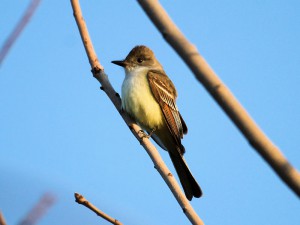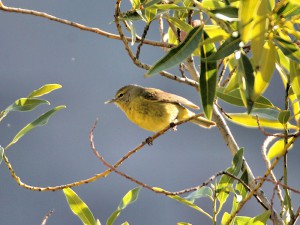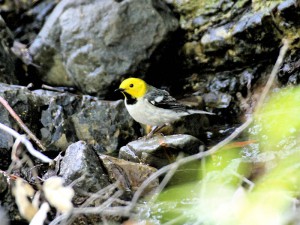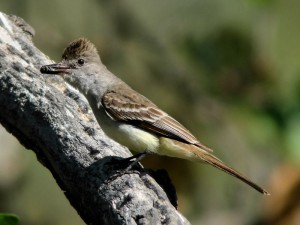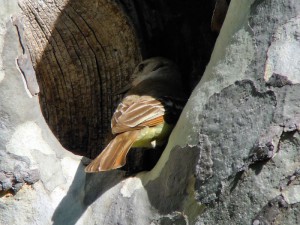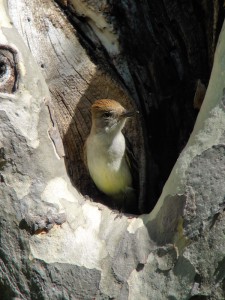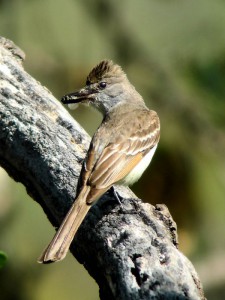Recently, we took a trip to one of the local canyons in the Santa Ana mountains in search of mid-April migrants. We hit the jackpot almost immediately. Right away, this handsome Ash-throated Flycatcher (Myiarchus cinerascens) greeted us in the parking lot. Surprisingly, he was pretty cooperative too. We stopped in a dry foothill canyon to listen for sparrows. First, Lazuli Bunting, Black-chinned Sparrow, Rufous-crowned Sparrow, Lesser Goldfinch, Western Tanager rewarded us. Typically, California Thrasher, Bewick’s Wren and both Blue-gray and California Gnatcatchers were there, along with California Towhee, Phainopepla and a distant Coastal Cactus Wren.
Silverado Canyon
Next, we went to our target destination: Silverado Canyon. The reported MacGillivray’s Warbler, a much sought-after mid-April migrant, ultimately called loudly enough to be heard over the stream. Mountain Quail were calling from all over everywhere. Pacific-slope Flycatchers worked the under story over the creek. Following that, a wave of common warblers came through: Wilson’s, Townsend’s, Black-throated Gray, and a few Nashville Warblers. A handful of late Yellow-rumped Warblers of the Audubon’s race also showed up. Some of the Orange-crowned Warblers (Oreothlypis celata) annually stay and breed here. And the morning light was perfect for photography too.
Other Migrants
Surprisingly, the vireos put in a good showing too, with half a dozen migrant Warbling Vireos and at least two singing Cassin’s Vireos. Perhaps the most common vireos were the vocal resident Hutton’s. An early Western Wood-Pewee sang its distinctive song in the distance, a perfect complement to the activity in front of us. Later, at a stream crossing with shallow pools, we found migrants coming in to bathe and drink. Hermit Thrushes stood by shyly as the warblers boldly splashed about. This lovely male Hermit Warbler (Setophaga occidentalis) gave us quite a show. Some of these bathing birds were so busy, they let us approach quite closely. Thus, even small birds like these warblers were huge in the 10×42 Zeiss Victory SF binoculars we were lucky to be using. It’s pretty hard to beat that kind of frame-filling view of such beautiful birds!
Lastly, I shot these photos with a Canon EOS T3 equipped with a 100-400 mm zoom lens.

